Contemporary art spaces have always occupied this strange cultural paradox—simultaneously public yet exclusionary, open yet intimidating. There are those who move through galleries with effortlessness, people who know everyone and everything in the art world. Then there are those who enter, half-expecting to be met with some unspoken test of cultural literacy, ready to dismiss ‘modern art’. But the most telling group—the one that reveals the most about what galleries could be—are the ones in between: the students, young adults, people stealing time from their lunch breaks to go to the gallery across town, people who want to engage but aren’t quite sure how.
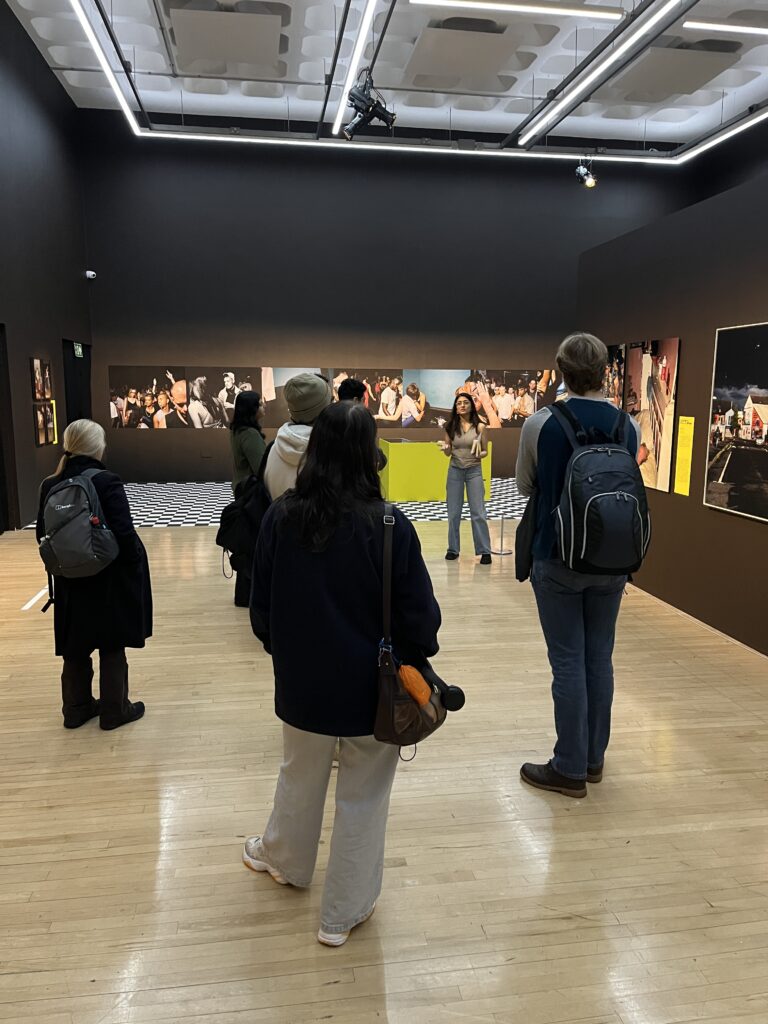
These initial thoughts eventually led to the ideation of Bonington Connects. Over the past few months, this student-led series has tried to renegotiate gallery spaces, by opening up art and research without watering it down. The first session looked at Bonington Gallery’s autumn 2024 exhibition After the End of History: British Working Class Photography 1989-2024 (curated by Johny Pitts) alongside writings by Susan Sontag and Roland Barthes— theorists that can often seem jargon heavy. But by situating ourselves among the photographs— theory instead of being an obstacle can start feeling like a tool to look at photography and access exhibitions. After the talk ended, the conversation continued into the atrium, where coffee and snacks helped turn what could have been a lecture into a more genuine exchange of ideas.
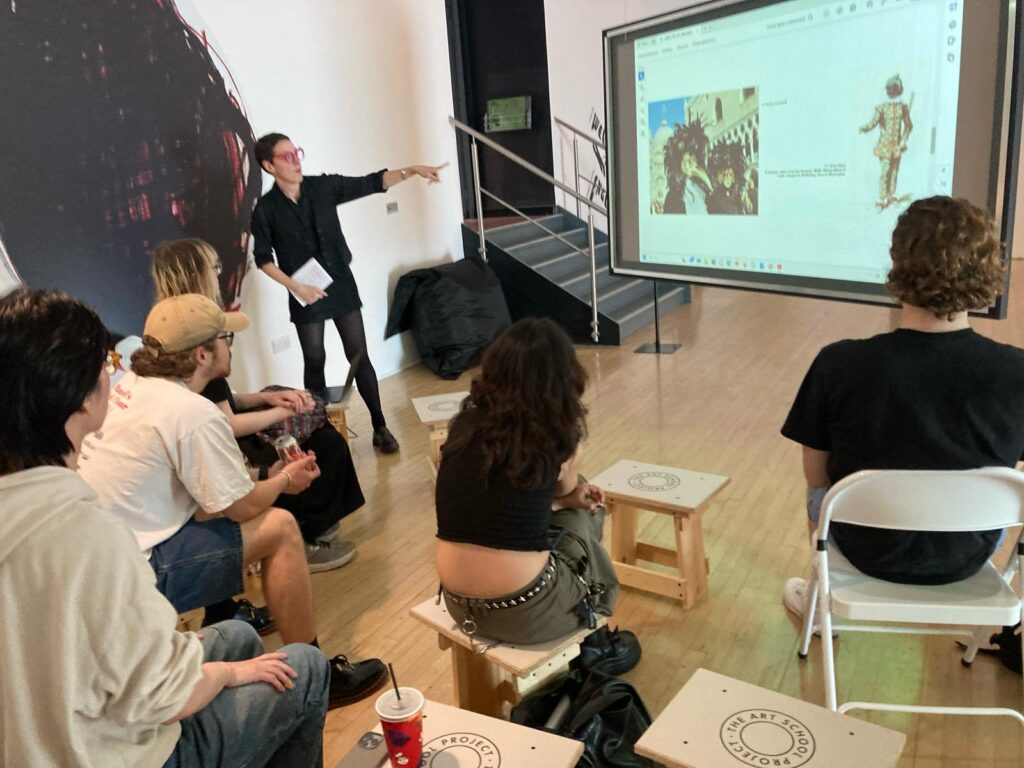
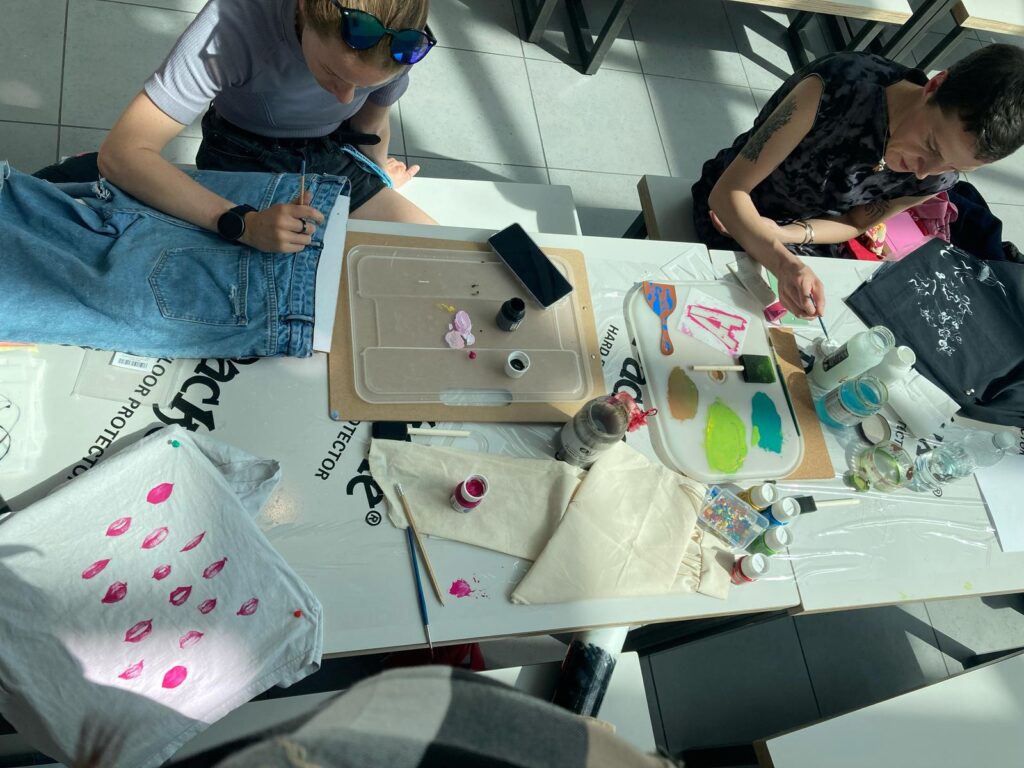
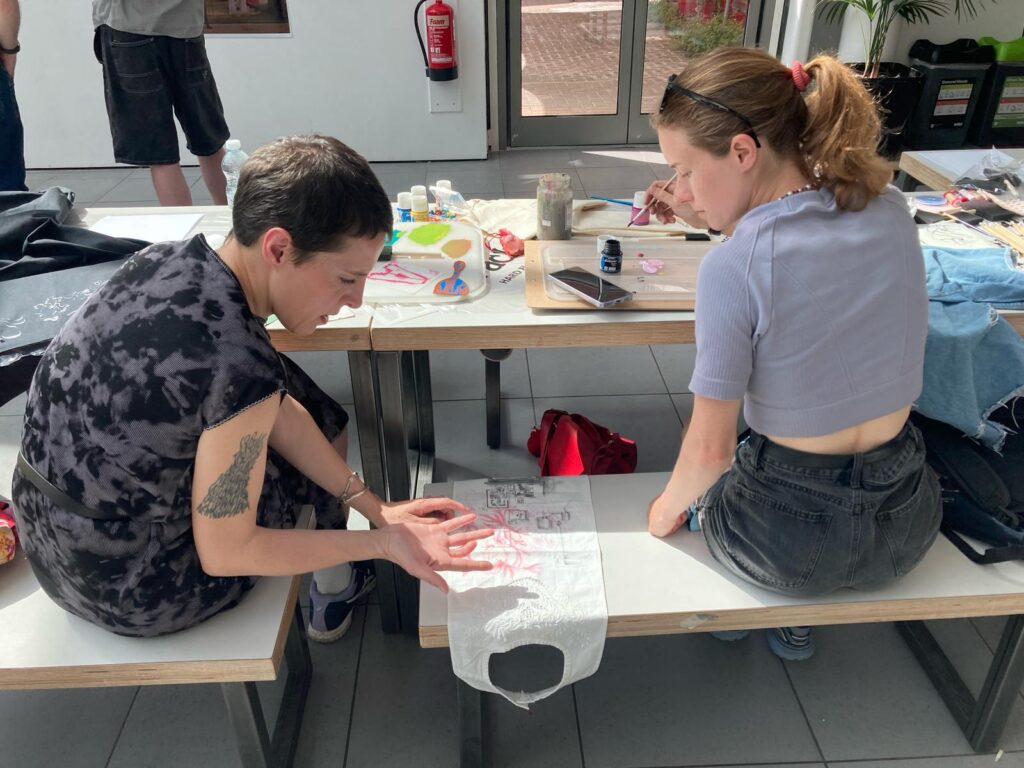
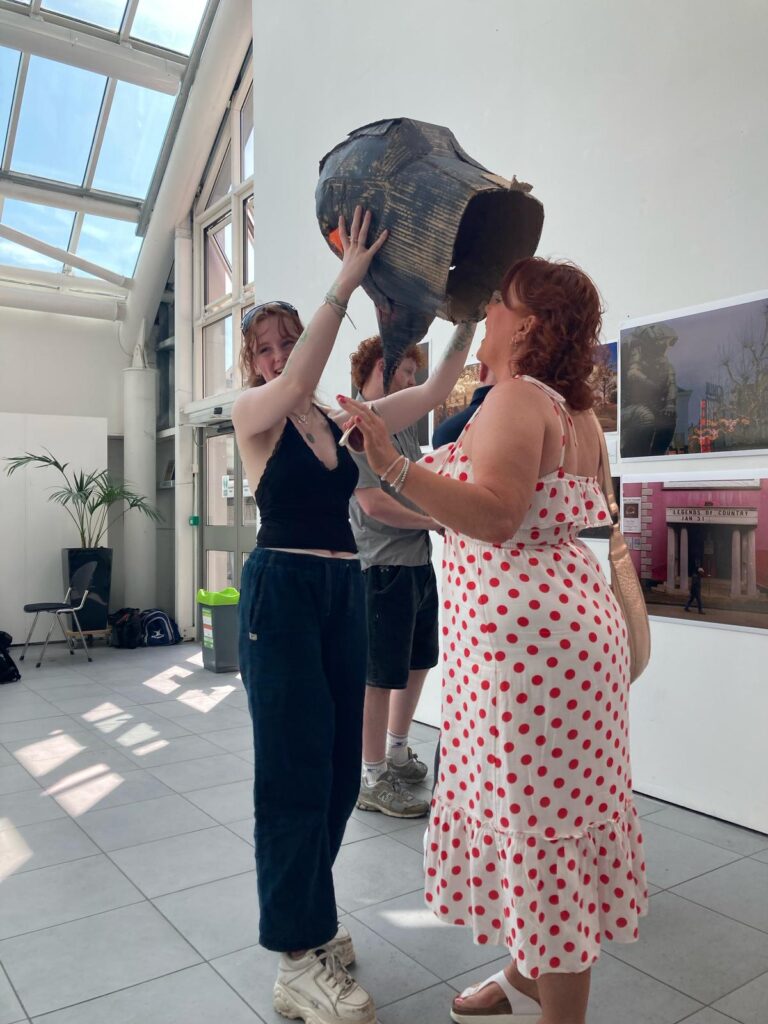
For the second workshop we had Arianna Tinulla Milesi’s two day lecture and workshop, which took the idea of participation further. As Arianna put it, her project “This room has no walls anymore, but just endless trees” became a literal reality during those two days—a space where art and fashion history, spontaneous interactions and collective drawing came together. Participants discussed subcultural fashion in connection with rituals, community, and the subversive powers of rebellion via identity. On day 2, these ideas were brought to life through transforming their own personal clothing items. It became an exciting intersection of theoretical discussion of ideas from the previous day and conscious collective making, personifying the ideas of building community via subcultural fashion.
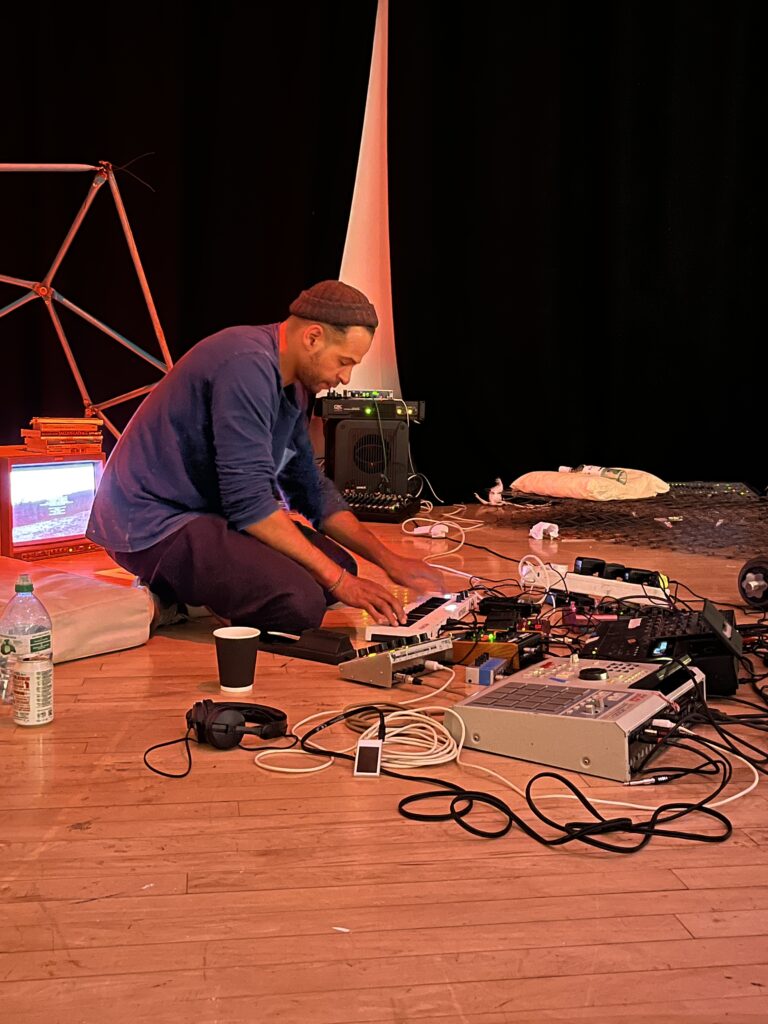
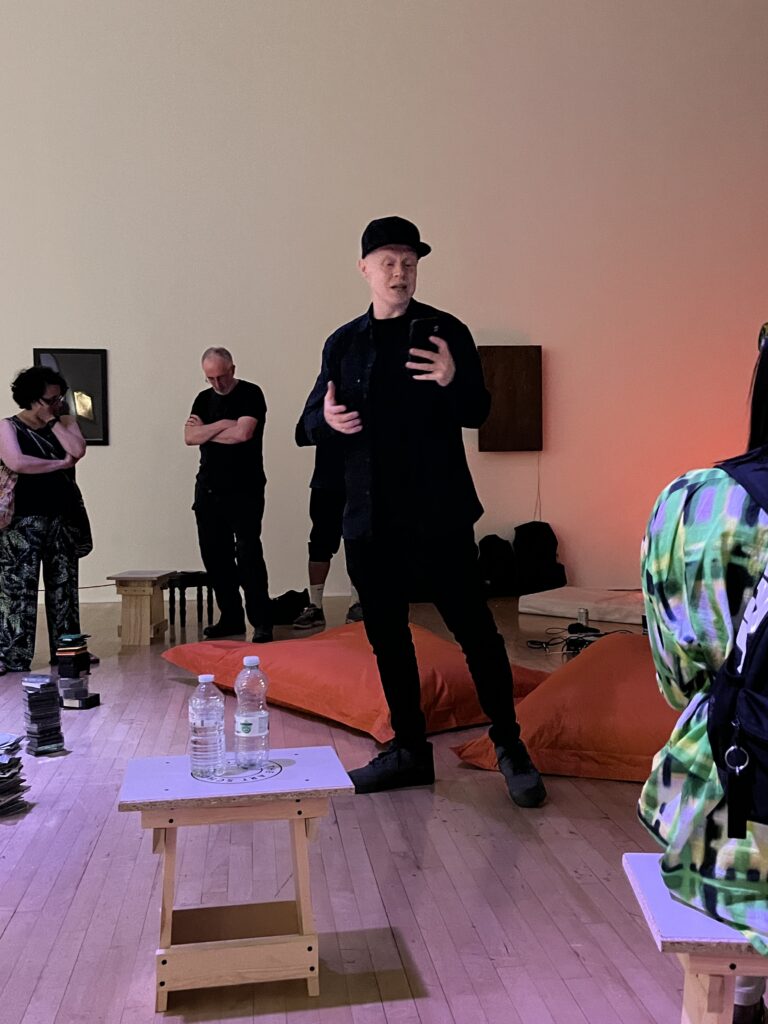
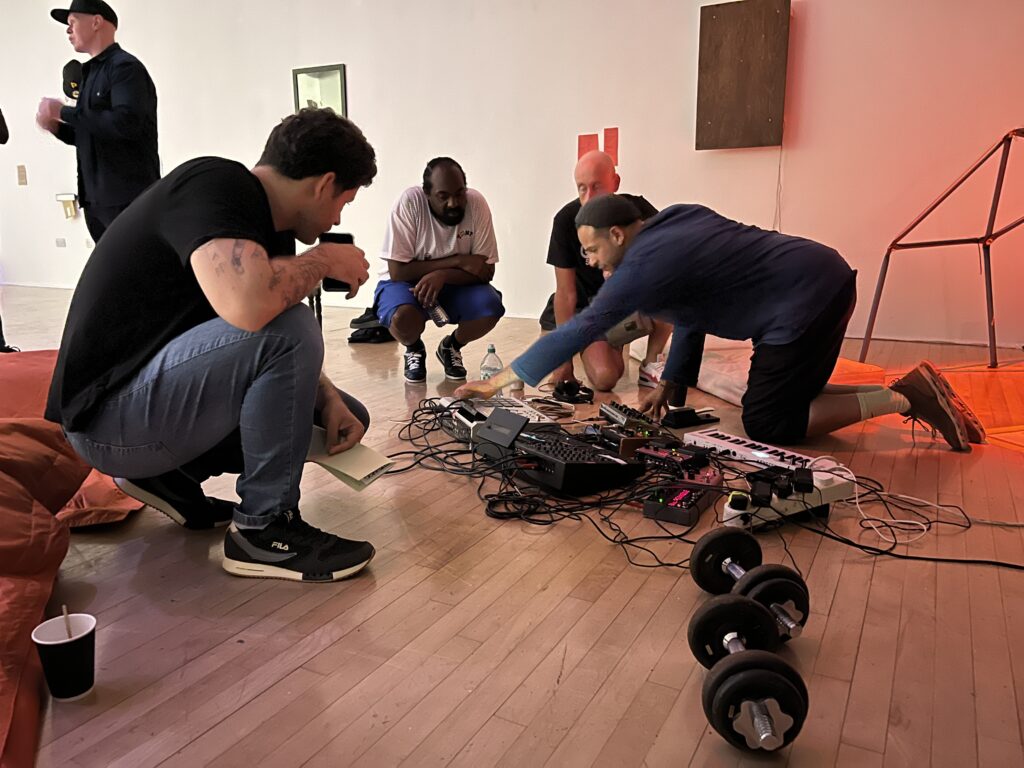
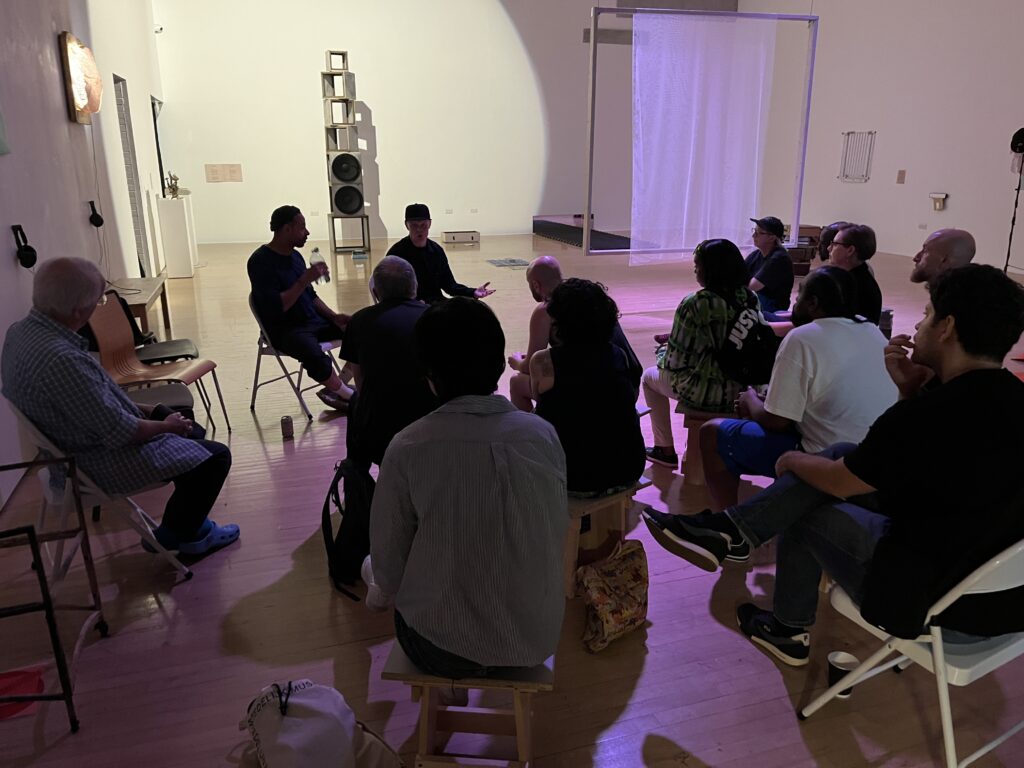
For the final iteration of Bonington Connects, we had Cappo and Tom Harris’s sound workshop and discussion. Their conversation brought to life the ideas that went behind Cappo’s exhibition CAPStone and the walkthrough contextualised the objects in the gallery, making it more accessible for the audience. Ending with a sound environment built by Tom Harris, conversation amongst visitors and artists evolved organically over coffee and many visitors later cited this event being particularly inspiring in their feedback.
These events were made possible through support from NTU’s TILT funding, allowing us to experiment with how galleries can become more welcoming spaces, invite external contributors and making sure they are fairly compensated. The events are tied together by their informality and their focus on participation and just the simple idea that galleries should be places for real conversations. Where it’s okay to like things, dislike things, or not be sure. Where big ideas can sit alongside personal responses and where everyone, regardless of how much art they’ve studied, can find something to connect with.
— Vidhi Jangra, July 2025
Bonington Connects was a programme devised and programmed by Vidhi Jangra and delivered in partnership with Bonington Gallery and its exhibition and events programme.
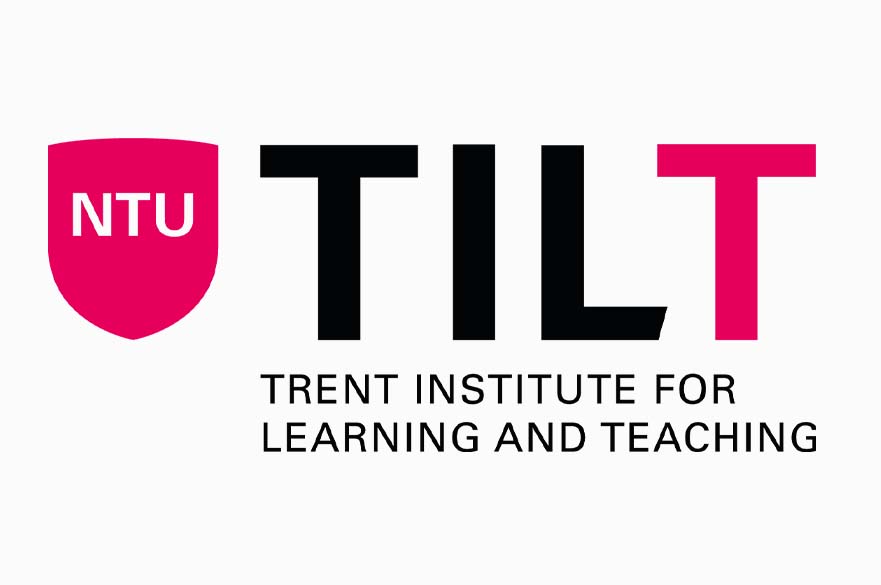
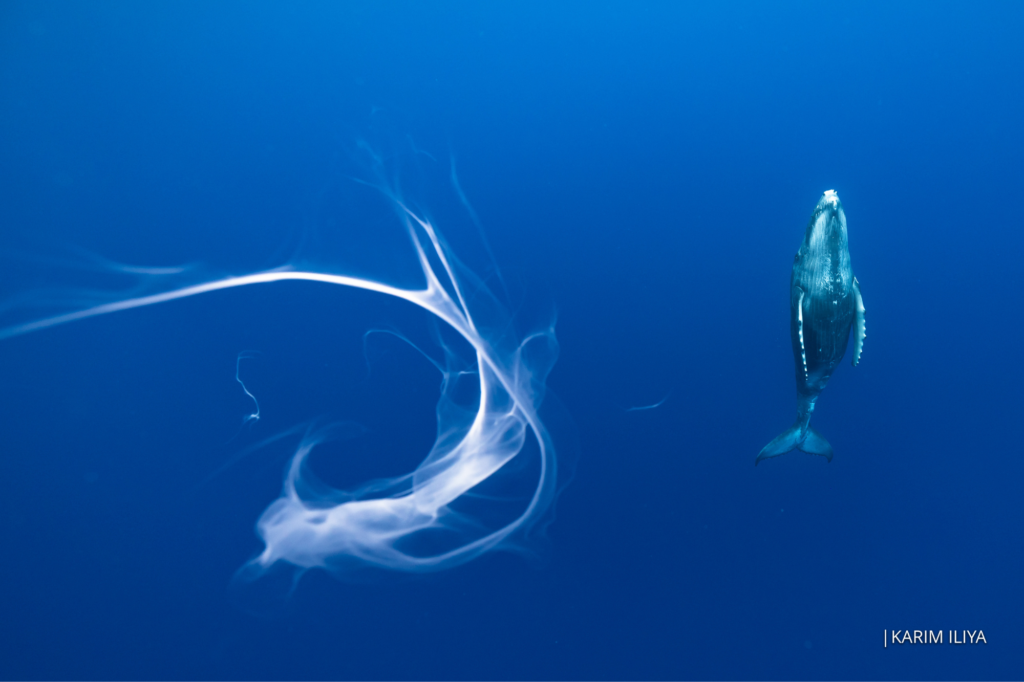
In this series of events, which are part of Jenni Ramone’s project on breastfeeding narratives and representations, Jenni is joined by photographer Karim Iliya, writer ‘Pemi Aguda, and nurse educator Meg Moorman. These conversation events invite us to think about how the arts and humanities can transform the way we practice and understand breastfeeding, health, and our interactions with other animals and the planet.
Join Karim Iliya discussing the hidden underwater worlds and other natural places he has portrayed in photography and films, with NTU’s Jenni Ramone.
Karim Iliya is a photographer, filmmaker, whale swimming guide, and former dearMoon crew member based in Iceland. He also co-founded Kogia, a nature conservation non-profit. Karim grew up in the Middle East and Asia and developed an insatiable curiosity for the natural world which has taken him into the midst of exploding volcanoes, battling whales, ice worlds of the Arctic, and many of the incredible places where humans and animals make their homes. Through his photography and films, Karim takes his audiences to hidden underwater worlds and documents other natural places in an effort to protect Earth’s delicate ecosystems. Karim has worked in over 50 countries, won multiple awards, and his work has been featured in numerous distinguished magazines, documentaries, and publications.
For more on Karim’s work, check out his website and for more of his photos follow this link to his Instagram.
Join fiction writer ‘Pemi Aguda reading from and discussing her recently published collection of short stories, Ghost Roots, with NTU’s Jenni Ramone.
‘Pemi Aguda is from Lagos, Nigeria. She has an MFA from the Helen Zell Writers’ Program at the University of Michigan. Her writing has been published in Granta, Zoetrope: All-Story, Ploughshares, and One Story, among others, and won O. Henry Prizes. Her novel-in-progress won the 2020 Deborah Rogers Foundation Writers Award, and she is the current Hortense Spillers Assistant Editor at Transition Magazine. Ghostroots, a finalist for the 2024 National Book Award in Fiction, is her first book.
For more information about Pemi’s work, please visit her website, webstore, and Instagram
Join nurse educator Meg Moorman discussing her project on using visual thinking strategies to enrich nursing education and patient care, and considering how the strategies might be applied to breastfeeding support, with NTU’s Jenni Ramone.
Meg Moorman is a pioneering nurse educator whose innovative integration of the arts into nursing education has significantly influenced the development of clinical judgment and holistic care practices. As a Clinical Associate Professor at Indiana University School of Nursing, she also serves as the Coordinator of the MSN in Nursing Education Program and directs the Faculty Innovating for Nursing Education (FINE) Research Center. Dr. Moorman’s contributions have been recognized nationally; in 2022, she was inducted as a Fellow into the National League for Nursing’s Academy of Nurse Educators, honouring her innovative approaches to nursing education. She has presented her research internationally and consulted with various universities and healthcare workers throughout the world. Her ongoing efforts continue to inspire educators to incorporate humanities-based methodologies, like visual thinking strategies (VTS), to enrich nursing curricula and ultimately enhance patient care outcomes. Through her research and practice, Dr. Moorman has demonstrated that VTS can foster a safe learning environment, encourage diverse perspectives, and improve medical professionals’ ability to interpret complex clinical situations. Her work has shown that engaging with art through VTS not only sharpens visual literacy but also cultivates empathy and reflective thinking among nursing students. She was recently accepted into the Harvard Macy’s Art- Museum-based Health Professions Education Fellowship.
Form more information about Meg’s work, please follow this link to their website, and a feature written about this project can be found here.
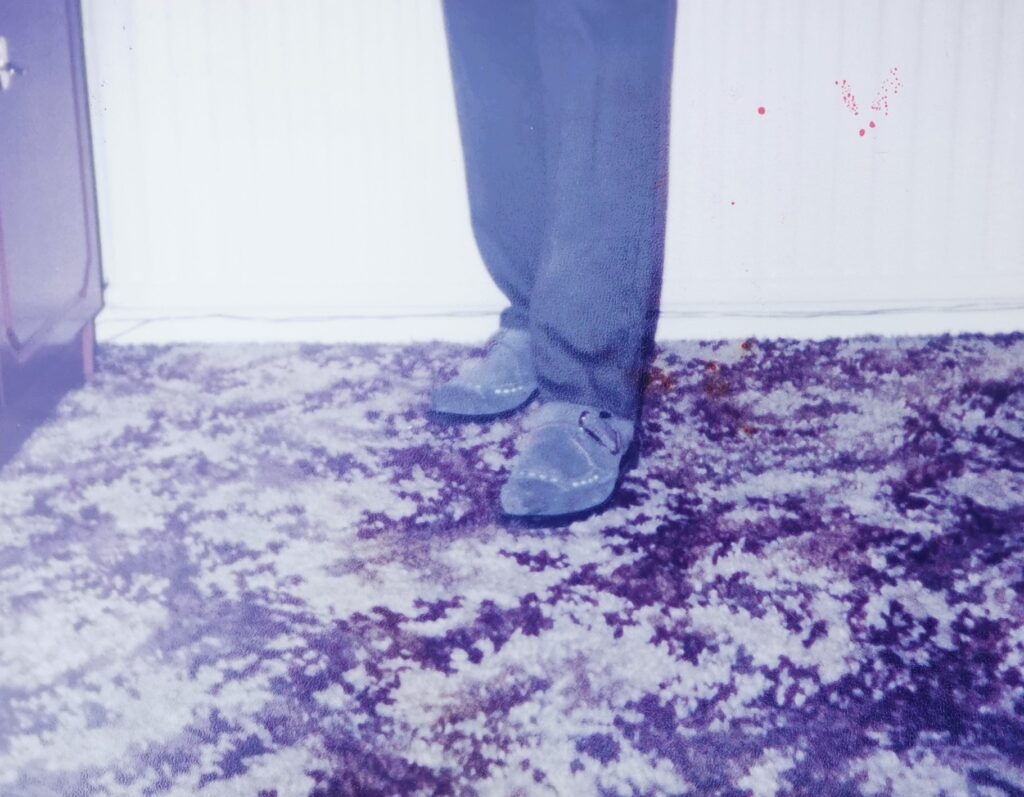
To accompany Bonington Vitrines #27: Nottingham Subcultural Fashion in the 1980s we are delighted to present a suite of specially commissioned essays by writer Ian Trowell. These describe and discuss in detail the conditions and key attributes of what defined that time – the designers, bands, night clubs and publications – as well as contextualising and positioning what was happening in Nottingham and the region against what was occurring nationally and beyond.
Visit the links below to read each annotated essay, or alternatively you can download a PDF here with accompanying image poster available here. Design by Jess Harris.
A limited number of printed versions will be available from the gallery during the exhibition.
Essay 0.1 – music newspapers, market stalls, stashed carrier bags
Essay 1.1 – bedrooms and living rooms, towns and cities
Essay 1.2 – shopping in the margins
Essay 1.3 – everyday places
Essay 2.1 – rival tribal rebel revel
Essay 2.2 – pop worlds
Essay 3.1 – night people
Essay 3.2 – futurist manifesto
Essay 3.3 – on suits
Essay 4.1 – mentioned in Déspatch
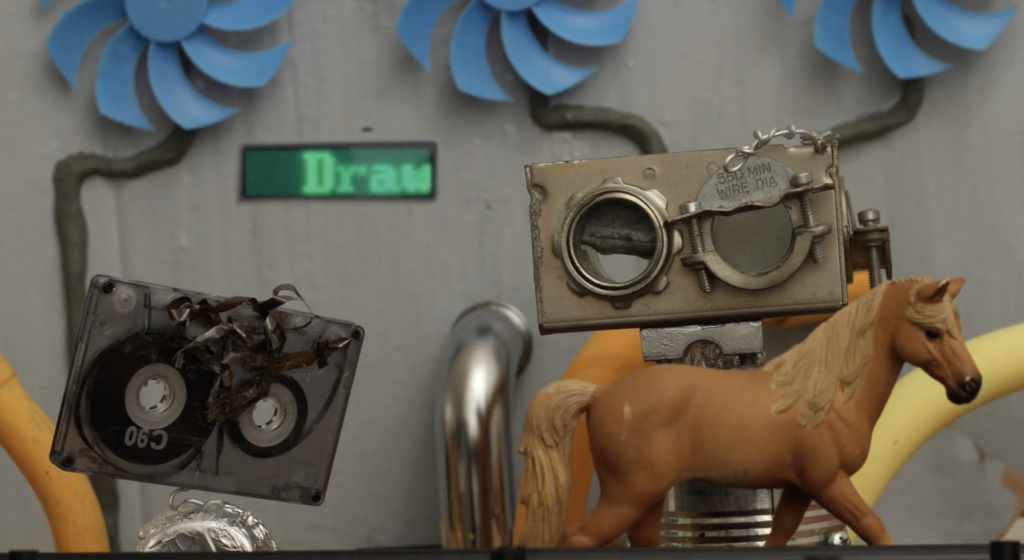
Step back in time and experience the magic of cinema through the decades.
For the second year running, Bonington Gallery is delighted to support students from the BA Film and Television course at NTU in developing, curating and staging a film screening event.
Hit Rewind is a film event celebrating the golden eras of storytelling, style, and culture. From the glitz of old Hollywood to the neon glow of the ‘80s, we’re showcasing short films inspired by the past, reimagined for today. Our hand-selected line-up of films celebrates nostalgia, reinvents retro themes, and breathes new life into cinematic history.
Join us for a nostalgic night of film, creativity, and retro vibes. Whether you’re a film lover or just looking for a unique and immersive cinematic experience, this is your chance to hit rewind and relive the past on the big screen.
Costumes inspired by your favourite era and characters from film history are strongly encouraged.
Hit Rewind is curated by Back to the Pictures who are a group of Nottingham Trent University students studying Film and Television in the School of Arts and Humanities.
Credit: Image from How does A.I. work? (Noah Reiner, 2023). Website: https://yourfriendnoah.me/
We’ve had a great time working with second year Nottingham Trent University English students on their Literary Practices module where they have been producing articles, events, resources, and public-facing outputs on the theme of Literature and Visual Culture.
Ahmad Almatrouk, Omar Almutairi, Mitzi Stanford and Karina Watracz have assembled a written response to our September 2024 exhibition with a piece entitled A multi-cultural response to Bonington Gallery’s latest exhibition: ‘After the End of History: British Working Class Photography (1989-2024)’. This also included an in-person tour and introduction event in the gallery. Enjoy the read…

After the End of History: British Working Class Photography 1989-2024 is a Hayward Gallery touring exhibition curated by Johny Pits, who is a self-taught photographer, writer and broadcaster from Sheffield, England—a Northern soul child. He is the product of an African American musician father and a white working-class mother who taught English in the Yemeni community. These identities are reflected in the show by his purpose of emphasising the perspectives of practitioners who turn their gaze towards both their communities and outwards to the wider world, so instead of looking at working-class people, the exhibition will explore life through the lenses of working-class practitioners, who have not only turned their gaze towards their own communities but also out towards the world.
As a part of a project for one of our English modules focusing on visual culture, in our second year of studying the English BA course at Nottingham Trent University, four of us (Ahmad Almatrouk, Omar Almutairi, Mitzi Stanford and Karina Watracz) had the opportunity of reviewing and analysing Bonington Gallery’s autumn exhibition After the End of History: British Working Class Photography 1989-2024. To conclude our review and close analysis of the exhibition, we shared our study by conducting a walking tour with our module leader Jenni Ramone, other NTU faculty and a few postgraduate researchers; we took them around the exhibition for a tour of the art as seen through our eyes and related the photographs to our own backgrounds, cultures and personal responses. The guided tour ended up being a very stimulating and successful event.
There are 25 artists in the show but we have focused on 5 that we felt greatly interested in and connected to: the culturally gendered and baffling work of Kelly O’Brien, Richard Billingham’s deeply intimate and beautifully mundane portraits, Hannah Starkey’s interesting portrayal of women in urban settings, Chris Shaw’s delicately private lens of working in hotels and Tom Wood’s somewhat unsettling and dismal but quietly astounding set of photographs documenting the stages of life through bus stops.
This blog post consists of our own writing and pondering on the reflections of our own backgrounds within the works and exploring the contexts and meanings behind decisions surrounding this exhibition and from close conversation with Gallery Director Tom Godfrey; we aim to shed light on this unique and thought-provoking show.

Starting with Ahmed’s reflection on Kelly O’Brien:
The photography of Kelly O’Brien highlights issues of gender roles, class identity, and the unseen labour of working class women. Her personal art is influenced by her own upbringing in a council home with an Irish immigrant single mother. O’Brien’s photographs reflect the everyday lives of women and domestic places, especially those of her grandmother, Nana, who is depicted as the cleaner. Her art challenges us to consider what is apparent and what is invisible in our daily settings, whether they be at work, school, or home.
“I am going to focus on these 3 pictures, ‘Nana’s Bathroom’ (2014), ‘Cleaner No.1’ (2022) and ‘Cleaner No.2’ (2022).
O’Brien’s ‘Nana’s Bathroom’ (2014) caught my attention due to the use of light colour. The photograph shows a simple, nearly empty bathroom. The yellowish, off-white walls evoke council housing, which highlights the working-class experience, and the lack of material belongings suggests a life that lacks luxury, creating a possible underlying anti-capitalist message within the photograph.
In ‘Cleaner No.1’ (2022) and ‘Cleaner No.2’ (2022) we can see the direct invisibility of labourers; in both photographs, the cleaner’s faces are hidden. This facelessness symbolises how domestic workers are often only seen through the lens of their labour and their identities are overshadowed by their work. The plain white background emphasises her anonymity, making this a universal representation of many labourers whose work goes unnoticed. Coming from an Arabic background where we have an increased amount of labour, I personally felt that O’Brien’s photography has taken this information from my mind and accurately articulated the situation there. All the people who are working in honest jobs are just treated like people in the background or as stated before, “invisible,” which is heartbreaking but truthful.”

Karina’s contemplation of Richard Billingham:
Richard Billingham, is a photographer, artist, filmmaker and art teacher from Birmingham. Billingham’s work highly focuses on family life and a lot of his work features the house that he grew up in, his parents, and his brother.
“Billingham is one of the most impactful artists to me within the entire exhibition. Billingham’s photographs are some of the biggest photographs on display in the gallery; the size of the photographs is very effective, although it is the details in his photographs that awaken quite a visceral reaction within me. The settings of both photographs on display are very squalid: dirty walls, a random cloth on the bedhead, dirt on the armrest of the sofa, Billingham’s father in the bed who appears to be sick, and his mother doing a jigsaw puzzle. This kind of impoverished and dirty environment is a constantly recurring theme within Billingham’s work and it is something which makes him a deeply vulnerable artist.
What makes Billingham’s art even more vulnerable is the fact he uses his own family house as setting and his own parents as subjects. I think the exhibitionist nature of this kind of exposal of his family home and his family, when he clearly grew up in quite difficult circumstances, takes a lot of courage. When I was doing my research on Richard Billingham, I came across the website of another gallery which had his work on display, and I found some of Billingham’s commentary on his work displayed in that gallery and his family. The images which Billingham talks about are different from the ones displayed here, but the subjects are the same. Billingham states that: ‘The pictures shown here are of my father Raymond (born 1931): my mother Elisabeth (born 1950) and my brother Jason (born 1977). Ray is a chronic alcoholic and has drunk for as long as I can remember. He has not worked since he was made redundant from his job as a machinist around 1980. Liz very rarely drinks but she does smoke a lot of cigarettes. My younger brother still does not seem to know what he wants: he gets a job for a week or two and then leaves it. I think he is very lazy.’
Billingham’s work really reminds me of my grandmother’s house in a village in the South of Poland where I spent many of my Summers as a child. My grandmother was extremely poor, as were many other people in Poland due to its very long recovery from communism. The conditions in my grandmother’s house were also very dirty and squalid, but I always admired it, because it was home. Even though Billingham doesn’t shy away from presenting and talking about his gritty background, his art possesses a visible sentiment and love for his home and his family.”
Mitzi’s views on Hannah Starkey:
Hannah Starkey is a Belfast born artist who favours themes such as women depicted against urban backgrounds, which is abundantly visible in this large-scale work. This piece is untitled and it is the only work of hers included in the show. This photograph is a showcase of mundane realism in art; the typical British setting juxtaposed by a striking, confident woman highlights the beauty of the mundane and monotonous world and how we fit into our surroundings.
“One person could think she stands out as an outrageously incongruous character in this scene which could connote fear in the viewer but I personally think she dominates and foregrounds the scene, like she knows she’s different but wants to stand out. This work is significantly gendered but the feeling of not fitting in is universal. I can relate to Starkey and the woman in this photograph; growing up working class definitely has its negative and untrue stereotypes. I remember walking down the street with my parents who are working class punks who look like they just stepped out of a Sex Pistols gig and feeling overwhelmingly alien compared to the area I grew up in. Moreover, the sky is dark, gloomy and almost sublime in the painterly, ‘Turner’ sense of how scary the power of nature can be, it is almost as if God could strike down any second and destroy this dynamic moment in time. The colours of the background are very dull, and dark which creates an antithesis between the foregrounded character in the composition who stands out as she has red hair, wearing pink boots and long blue socks, she’s making a statement. It makes us wonder, is this an unnatural environment for her? Does she feel nervous being there or comfortable? There are 2 other figures in the photo who are void of colour and fade away with insignificance compared to the female perspective which dominates, linking back to the themes that Starkey focuses on. Additionally, connecting this work to the Working class theme running throughout this exhibition felt distanced and difficult for me at first but when you think about Starkey’s intentions and forcibly peel your eyes away from the interesting and dominating woman in the foreground you can see that the writing on the right wall above her is a mural which were common around Belfast for both Protestants and Catholics to acknowledge the loss of life in battles such as WW1, this specific Loyalist mural is commending the South Belfast brigade and the subtle inclusion of realist horrors, a sense that ghosts are lingering on the street contrasted with a woman dressed in Japanese, Lolita style clothes who objectively does not fit into the environment feels so surreal and dystopian that it intrinsically displays themes of the working class life, especially the merging of identities.”

Omar on Chris Shaw:
Shaw was born in Wallasey Merseyside in 1961; he is a documentary photographer and one of his most well-known works, Life as a Night Porter, came from years of working in hotels across Europe, often during night shifts. He stated that:
the reason that I got the hotel job was I was homeless, actually, and a way to get out of my homeless situation would be to get a job in a hotel which had staff accommodation, …
“Having to keep himself awake, he started taking photographs to help him stay awake so he wouldn’t get fired. He took photographs of anything he found bizarre that he encountered; from naked drunk men, drunk people locking themselves out of their rooms, which to him it’s what he hated the most. He wasn’t interested in capturing conventional beauty. Instead, he gravitated towards raw and sometimes uncomfortable truths about society, and that was an era when photographers were pushing boundaries, but Chris stood apart from that by having a dark and an intensely personal style. I find something haunting about the way he captures isolation in crowded urban environments, and that’s a reminder that even in the most populated areas, there are stories of loneliness and solitude. Chris started capturing these spaces and the people within them, creating photos that feel like stolen moments, as if the viewer is seeing something that’s not meant to be seen.
What makes his work particularly powerful is the aesthetic that he developed; his photographs are usually black and white, often grainy or underexposed. This style brings a feeling of mystery and darkness, making each scene feel raw and real. He was heavily influenced by photographers like Anders Petersen and Daido Moriyama, who also embraced imperfection and darkness over polished visuals. Chris made this style distinctly his own, using it to reveal an almost cinematic quality that captivates the audience. His photographs have been displayed in exhibitions around the world and published in books like Life as a Night Porter and Weeds of Wallasey. Through his work, Shaw has built a unique legacy in documentary photography, inspiring others to seek beauty in places and moments that might go unnoticed.”

Back to Mitzi looking at Tom Wood:
Wood is an Irish born artist who lived in Merseyside between 1978 and 2003 before moving to north Wales. Due to costs, he uses versatile mediums such as old fine film and out of date filmstock which lends a grainy quality to his images. For over 15 years, Wood documented his bus journeys through photography, capturing an extensive collection of images that culminated in his renowned series All Zones Off Peak in the late 1990s.
“Within these photographs, the bus transforms into a stage, with passengers assuming the role of performers. Some subjects confront the camera directly, while others gaze dreamily out of the windows, seemingly unaware of Wood’s presence. At times, the perspective shifts outward, as figures on the street appear blurred by rain-speckled glass; in other moments, Wood’s lens reverses the gaze, observing them from outside the vehicle. His bus journeys depicted take place in Liverpool; the images show diversity and intimate daily life of strangers looking into or through bus windows, even so that the viewer’s own reflection also becomes a part of the image. His work is shown through 4 framed photographs symmetrically placed forming a square, titles include: Towards Huyton (1992), Chester Bus Station (1992), Lime Street, Liverpool (1995) and Kirkby (1996), all the photographs are analogue darkroom prints on Maxima Gloss. Two of the photographs are taken from the interior of a bus, the first scene is decorated with characters, children who are innocent of mind and distracted by their individual lives; to me it’s quite a peaceful and humorous image. There’s graffiti on the interior, a nod to your average busy bus passing through working class neighbourhoods. You don’t particularly focus on one figure or face, it’s a universal theme of mundane life but also intimate and arguably beautiful. The other photograph taken inside of a bus is a combined lens of the interior scene and another bus looking in, the windows are foggy, reminding us of a chilly rainy day, figures are looking at one another between buses, it’s an awkward experience we’ve all had. The tilted angle provides an unstable composition, perhaps suggesting a tension between the characters within the two buses looking at one another, one young and one old.
The two other photographs are taken of people waiting at bus stops, one shows two young girls directly addressing the viewer by looking nervous and/or judgemental at the camera in a visually unappealing and dreary bus stop. The other image contrasts greatly by portraying mothers and their children also waiting for the bus, another mundane, very day life scene, but the viewers eyes lock straight onto a glamorous looking woman and mother wearing a pink blazer and rocking an 80s hairstyle, she’s dominating the scene by juxtaposing herself (not on purpose perhaps) with the setting of a busy bus stop. However, her eyes are cast downwards, almost in submission or deep though, maybe even sadness. I’ve thought long and hard about what she might be thinking about, but I can’t quite figure it out, so this work left me slightly unsatisfied but heavily intrigued.”
And that concludes our review of Bonington Gallery’s Autumn 2024 exhibition. Throughout writing this blog and figuring out how to talk about art in this way we really had to challenge ourselves to see from different perspectives; the art existing in the exhibition forced us to talk to one another about our own backgrounds, which we quickly realised were worlds apart as we all come from very different upbringings, but all undeniably working class which gave foundation to the universally relatable topics of conversation that we had during this process. It brought us together, as we saw ourselves in the photographs we were also able to understand each other potently. For those of you who missed the exhibition then it travels to Stills Gallery, Edinburgh in March 2025.
Written by Ahmad Almatrouk, Omar Almutairi, Mitzi Stanford and Karina Watracz.







For an exhibition in March 2025, we are running an open call for materials that relate to Nottingham’s independent fashion scene in the 1980’s.
This period was an exciting time for homegrown fashion and style culture. Brands such as G Force, Olto, Cocky’s Shed plus others combined local talent & style discernment, with entrepreneurism & DIY attitudes to start labels, open shops and form connections and influence on a global level.

Do you have any Nottingham labels in your wardrobe? Did you start/run/work for a local label? Did you shop at G Force? Do you have photos of you and your friends wearing garb to The Garage? Did you pick up copies of Nottingham’s style pages Débris or Despatch? etc etc! If so, we’d love to hear your anecdotes, see your photos and materials (Eg. photos of night out, flyers, receipts, magazines, brochures) that relate to the scene and time.

The intention is to build a collection of material that will become part of the exhibition, and if contributors are happy, have this preserved within a growing archive of material going forwards.
In the first instance please email boningtongallery@ntu.ac.uk with any information and digital copies of materials (just snaps on your phone is fine) and we can take the conversation from there.

On the occasion of the Design & Digital Arts (D&DA) building launch in November 2024, Bonington Gallery is delighted to have partnered with Nottingham School of Art & Design to develop and present two specially commissioned art installations by design practice Foxall Studio and artist Matt Woodham – both working at the forefront of their respective fields and industries, and both past exhibitors at Bonington Gallery.
Whilst distinct in approach, each commission considers the technological potential within the D&DA building; the generosity it awards to different forms of creative practice; and the dynamic collaborative ethos that drives the student and staff community. This community has been central to the realisation of both commissions, actively involved in the production of digital material that will be visible across the building and in learning from professional practitioners, recognising the endless possibilities of collaboration and engaging with new equipment & methodologies.




Taking the approach of a ‘hack-day’, Foxall Studio ran three consecutive 1-day workshops in October with 40+ undergraduate students from 9 courses in the department. Working in small groups and supported by a technical team, students channelled their individual and collective practices through a variety of technologies to rapidly produce a diverse range of digital artwork and creative content. Foxall Studio then operated as magazine editors, utilising and framing this content to produce an expansive ‘digital zine’ that will be seen displayed on screens throughout the building.




Also inspired by the dynamic encounters between people and the spaces in D&DA, and working directly with staff and students from our new MSc in Creative Technologies, Matthew Woodham’s project in room 103 creates a simulated world of interacting organisms with unexpected possibilities. Woodham has created an interactive and immersive real-time installation to generate ‘novel dynamics’, by allowing visitors to alter parameters of a reaction-diffusion system in a specially created computer programme. The audience collaboratively constructs the projections in the space, adapting the experience for the viewer. Through doing this, visitors can consider the relationship between individuals, wider communities and the space they inhabit.
The D&DA building is not open to the public, but two public tours of the commissions will be led by Bonington Gallery Director Tom Godfrey on November 12th & 14th that anyone is welcome to join.
Book: Tuesday 12 November (1pm – 2 pm)
Book: Thursday 14 November (1pm – 2pm)

Founded in 2006, Foxall Studio has collaborated with global brands such as Vogue, GQ, Google, and YouTube. With expertise in branding, art direction & design, Andrew and Iain lead innovative, experimental projects that challenge traditional approaches to brand building.
www.foxallstudio.com
Matthew Woodham is an artist who works across disciplines. His practice explores system dynamics in nature through research and practical application. His academic background in cognitive neuroscience has informed an expanded study of the common dynamics and structures described by physical and mathematical principles. Woodham is based between Nottingham and London, and graduated from The Royal College of Art in 2023 with an MA in Information Experience Design.
www.matthewwoodham.com
Designed by award-winning architects Hawkins\Brown, and delivered by local architects CPMG, the new Design & Digital Arts Building will place Nottingham as a UK hub for film, television, animation, UX design, games design, graphic design and more.
We are delighted to confirm that legendary Nottingham rapper Cappo will perform at the launch of our next exhibition After the End of History: British Working Class Photography 1989 – 2024 on Thursday 26 September, 6-8pm. Be sure to book your free ticket! He’ll be accompanied by Claude Money playing records throughout the evening.
Find out more about Cappo:
LeftLion interview from January 2024
Killa Tapes interview
Cappo interviewed for Fly Fidelity podcast






Dr Paul Adey is a Higher Education lecturer of Music Performance and Music Business at Confetti Institute of Creative Technologies (part of NTU).
Performing under the artist name of Cappo, he has practiced hip hop lyricism for over two decades. During this time he’s had the privilege of appearing at many of Europe’s premier live music venues, performing alongside artists such as Public Enemy, Skepta, and Sleaford Mods.
Throughout his career he’s released music on various record labels including Tru-Thoughts and Ninja Tune, and featured live on BBC Radio One (John Peel), BBC Radio 1 Xtra, and BBC Radio 6 numerous times.
Paul’s interdisciplinary research focuses on popular culture, literary devices and music concepts such as intertextuality and allusion, and the semi analysis of song lyrics. The interdisciplinary nature of Paul’s research links his work to Music, English, Creative Writing and Media Studies.
Looking back on Reactor’s two exhibitions Here, the Gold Ones flatter and Here, the Gold Ones meet we commissioned a text by David Burrows released here alongside a single screen edit of the flatter film.
Last night I met Max Gold. This was unexpected as I was at the party celebrating my 100th birthday, invisible to all, feeling sad and sorry for myself (because I could see that I was not in good shape and not long for this world). But I was happy to hear the nice things friends and carers in the care home were saying about me, and enjoying the kind words of (very important) people I had never met before, paying me an unexpected visit. I have had this dream before, several times, but never with Max making an appearance. Max can see me though (in my dream)! Max can see the invisible me (not the me, sitting at a table full of food, shaking hands, exchanging pleasantries). I know this because Max crept up behind me (the invisible me) to deliver a message to my right ear, ‘The fear of loss is a strong motivator… Stronger than the opportunity to gain or change…’ I remember distinctly thinking I have heard these words before but couldn’t place where and when. I looked behind me and couldn’t see a soul but still whispered, ‘Max?’ (Somehow, I knew it was Max Gold who had spoken, a figure or entity that I associate with the art collective Reactor.) Again, with words familiar but not placeable, Max spoke, and with increasing conviction, saying this fear (of loss) was not their own fear. Max was in the zone. Max was the prize. Normally this recurring dream of mine ends after guests praise my stoic acceptance of a life lived less successfully than I might have hoped for, shedding tears at my constant ploughing of a furrow no matter what, which brought reassurance to everyone who counted me as a friend or acquaintance. This part of the dream – the best bit – did not happen. Instead, everyone turned their attention to Max, now materialised as a golden egg (though this description does not do justice to the Gold One – egg-shaped with tentacles, a flickering mouth and rippling, golden skin). On viewing this apparition, I wondered whether this was my dream or, indeed, whether I was in Max’s dream? Was Max in my head, or was I in Max’s head, or were both of us in a stream of thoughts in another head. Or maybe Reactor had hacked my unconscious?

Then I remembered where I heard Max’s words before. Suddenly images of a laptop and video-link flashed in my mind’s eye. Max Gold’s words were from a video I had watched over and over, via a link sent by Reactor, entitled, Here, the Gold Ones flatter. This hour-long film features bodies (creatures, entities, realities?) and their often-overlapping voices. Even though the audio captures every word of the Gold Ones, and their visages are clearly rendered, it is difficult to understand every exchange, every utterance or gesture. Manen’cha – an ever-changing globule of rainbow colours – seemed most coherent of the six Gold Ones that appear in the film, but still oblique in their meaning. The blob-like Gold One suggests the tale told by the film is a prologue and, ‘You’ll need to read between the lines’. Manen’cha does not stop there and offers more authoritative if cryptic comments: ‘it is easy to reveal your hand’ and ‘what we do not imaginatively project our own consciousness into remains strange’. I try to follow Manen’cha’s advice and insights (this is what I am here for after all, I think… to understand the insights of the Gold Ones, when they were flatter). The film does seem to be a prologue, in that it presents a conversation between the Gold Ones about how they are (or were) one or many when flatter. The Gold Ones seem to inhabit different dimensions to each other, or one dimension in which direct exchange is not always straight forward – a latency issue perhaps due to being flat or residents of a two-dimensional world that is the early, soupy stage of the cosmos. Or maybe they just don’t listen to each other when they should, which is certainly true of Max Gold. Somehow though, the Gold Ones communicate ideas and piece together their own origins and the notion that a ‘Fourth Dimension’ promises escape or novel forms of agency for them. So, this is a film about a universe created, or perhaps channelled, by an art collective and their collaborators?

Alternatively, and I couldn’t shake this idea, the film is an allegory for a number of scientific and/or philosophical and/or spiritual problems (but this may say more about me). The film is possibly an allegory for:

Other voices from two more Gold Ones featured in the film chime in at different times and add substance to my allegorical readings. Challenger – a golden, glowing creature that seems a cross between a porpoise and a ray (fish) of light, ancient and futuristic looking at the same time – says ‘I am of the Deep-End’. And Ivan Poe – a blue, fluttering sheet with a T-shaped tear – says, ‘There is no map. No route to follow out of ‘ere’.

I think some more about Peeza Peel’s description of the dark rectangles (not squares – this seems important) that may form a cube (which according to conventional understanding, has six square faces). And then I count the number of Gold Ones in the film, all presented through the rectangle of my laptop: Max Gold, Poostied Piper, Peeza Peel, Manen’cha, Challenger, Ivan Poe. Something registers. For rectangles to become a cube, a transformation of dimension, form or perspective, or possibly all three of these things, must occur. And this must require tremendous energy. I get no further with this thought, something else is bothering me.
That there is no map, well that makes me anxious. Why? I am not sure where I am exactly, and I have nothing to help me work this out. I say to myself, right now I am remembering a film watched on my laptop about the Gold Ones who reside in a flat universe. I remember sitting on my bed to do so, but the remembering of all this is taking place in a dream in which I am at my birthday party in a care home, aged 100 years. In the dream I think I am sitting on my bed, but I can’t be sure of this. How do I know I am not one more rectangle? A seventh rectangle! Why have I not woken up yet. I want to get out of this dream place, this recurring dream play. Where exactly is this care home? I need a map, or something, unless there is no other place to get to from here? But there must be another place, where I sat down and watched a film by Reactor on my laptop and where I will wake up, soon I hope.
That sounds strange, I know. How can some other place be in the past and the future? Right now, in my birthday dream, I know I am in the presence of Max Gold, only recently escaped from ‘long before time was invented’, but I also know Max Gold has been out of the soup for a while before this (Max has been in other Reactor works going back over many years). The human habit of thinking through timelines seems to have no relevance when thinking about the lives of the Gold Ones. Loops and cycles may be better analogies for their modalities of being. And, I suspect, this is true of the lives of the artists when collaborating as Reactor; in the midst of collaboration, does time have a linear flow for them? There is perhaps an acknowledgement of physics in the discussions of the Gold Ones which may influence the thinking of the Reactor collective: most contemporary physicists will attest to the fact that there is no absolute time, no linear time. But, again, maybe I am reading too much between the lines. Maybe there is no allegory, no metaphor in Reactor’s work. Here, the Gold Ones flatter literally presents the Gold Ones when they were two-dimensional beings, projections in the cosmic soup or just after they escaped or exited? An origin story at any rate, which like all origin stories, is a myth that may have low reality content but that marks a question. This standard, lay-person’s science-fictioning-anthropology. For anyone might observe, as Sun Ra implied, reality can be produced through myth science – ‘I don’t exist, but that’s OK because neither do you!’. In the case of Here, the Gold Ones flatter, the question is where are we (the Gold Ones) from, how did we get here from nothing? The Gold Ones and Reactor themselves make the answer to this question explicit if not entirely clear: at the beginning there was only ‘of the shelf’.
I am thinking (still in my dream), what does this mean – ‘of the shelf’? – when Max Gold speaks again:
‘I is sticky
Stuck
And I’ve got five ways to get unstuck:
1. Make sure the goal is a upward cosmic call
2. Make that cosmic calling an upward BOOST
3. Always avoid backward boosting
4 Put your mind to it.
5. Put your grind to it.’
The effect of this short speech was instant, I was forgotten by the guests at my (dream) birthday. They demanded to know who this motivator-prophet was, and should they all try and get unsticky, to change and follow the motivator’s example? (And another worrying thought surfaced, were my birthday guests now in my bedroom, watching the film on my laptop?) I wanted to wake up but couldn’t, and experienced a terrible dream-paralysis… I was stuck (the irony was not lost on me). Max Gold continued, ‘I am the One’, and something about not knowing twos or threes. Someone new to the dream shouted, ‘You’ve got that the wrong way round’. This was from Poostied Piper. I don’t know how I knew this as I couldn’t move to look around, and I couldn’t see them amongst the guests. I reiterated Poostied’s observation, as loudly as I could, but no one could hear me. I was not just invisible; I had become inaudible.

And then Max Gold declared, ‘One for permanent change, shoot for the boost!’ and I woke up. But not in my bed! I found myself in a large gallery, and on the walls, surrounding me on all sides were the Gold Ones, projected above several assemblages. The six Gold Ones from the film were present: Poostied Piper, Max Gold, Manen’cha, Ivan Poe, Peeza Peel and Challenger. And the conversation picks up where it left off in my dream. Poostied asks Max, ‘Are ya serious?’, for the Gold One might be bluffing about leaving for another dimension. But Max is not. Poostied wants to go too but is wary of the fourth dimension and asks Max for some precious ‘time-periods’. I understand Poostied’s fear, the lack of security and danger that might follow Max pulling the ‘cosmic trigger’, but Max is off, off the shelf so-to-speak (as Max puts it) and leaves without ‘Fear of loss!’, for as they say, ‘Life and death are permanently changing.’
Max does indeed seem to go somewhere beyond the soup, to make a new home or world (though little changes here). I am unable to follow Max. I am still where I was. I find a guide for the exhibition Here, the Gold Ones flatter, dated late March 2022, only it isn’t. I know I have lived until June 2024 at least and the exhibition has been deinstalled. I can’t be sure if this is still a dream though. I remind myself, Reactor time is not linear time and reflect that confusion is to be expected. On being approached to write about the Gold Ones – specifically Here, the Gold Ones flatter – I felt excitement tinged with trepidation. Their past projects have included many strange manifestations, including: a kind of factory in which it was not clear what happened or who was who, even after documentation of the event was made available – there is alleged manipulation of audience member’s memories (Total GHAOS, 2005); a venture in which the objective was to form a cult-like (my italics and term) group that believed whole-heartedly in systems rather than fighting them (Big Lizard’s Big Idea, 2009-10); and a world in which time is a currency, to be traded in periods (Dummy Button 2013). And then there is the Martinmas Interviews, held annually, to recruit secret members of the group. These secret members, should they exist, could be anyone, including people you probably know (I swear I am not and never have been a member of Reactor). They play with your sense of what is real (that is why I had a sense of trepidation on being approached to write this text), but they also offer you a way out of mundane realities, to get unsticky and take a chance (it is exciting to get lost in the worlds they create). To enter the narratives of Reactor involves becoming somebody or something else as well as disassembling your ego. It is best not to think you know best, or you know much at all when encountering Reactor. I suspect, the ethos of Reactor and the world’s they create is not focussed on understanding but making, changing, breathing a different air.

Yet I want to wake up! Still in the gallery, I close my eyes and think hard on something bizarre that Peeza Peel says, which stops my heart beating. As Max boasts about the qualities of Gold – its ‘bold’, ‘courageous’, ‘brave’, ‘strong’, like ‘steel’, ‘a champion’, ‘a hero’… ‘the Gold One’… he must be talking about himself here – Peeza says my name. This must be coincidence. After stating ‘The landing of Max on this Fourth World became known to the Hands as the ‘day of Gold’, Peeza says, ‘Poostied Piper of Hamline Instrategy – David size see Max in the cosmic care home. Does ee know that you trapped him in this celestial loophole?’ I think back to a past discussion with Reactor, about their use of materials of all things, and a brand of filler that I think was called ‘David’s Eyes’, but I am not sure, I could have just made this up out of desperation. I play Peeza’s words through my head one more time. Peeza definitely says ‘David’ – that is my name! What the actual fuck! I open my eyes and… oh no! I am now inside the Cosmic Care Home. I know this place from viewing another video that Reactor sent me some time ago, to aid our discussion of the group’s performance at the Bonington Gallery in 2021. The Cosmic Care Home is where the Gold Ones reside in the future. (Wrong word perhaps – future? I don’t know, Reactor were hesitant when talking about times and dates, for reasons stated above). During our discussion, I was fascinated and eager to understand the protocols and rules of the Cosmic Care Home, and the nutritional regime of its residents. It is a place in which care is evident but in which the Gold Ones’ irrational behaviour (irrational to me at least) is disturbing. But then the Gold Ones may well be very old (if that means anything) when they are residing in the care home, or I was seeing customs from the present that have evolved beyond recognition, so as to become a foreign culture to me. As eager as I was to find out about the care home, I did not want to visit it though, or be trapped in a celestial loophole. Deep breaths. Deep breaths. I couldn’t possibly be trapped there (here). How to escape this feeling of reverse déjà vu? How do I get out of here? Context! I will reach for context.

I am writing a text on Here, the Gold Ones flatter, and the work of Reactor, and I fell asleep. When I wake up, I am going to list the context of Reactor’s film and the Gold Ones project. I have thought a lot about the context of this film, and also the earlier exhibition Here, the Gold Ones meet situated in the Cosmic Care Home. The earlier work seemed to have a relation to performance and installation that emerges in the territories first explored by American artist Paul McCarthy, but Here, the Gold Ones flatter moves my frame of reference closer to home. The film has the frontality of theatre, a directness of delivery and, at times, a musical layering of intersecting monologues spoken by various avatars, which makes me think of the theatre of Samuel Beckett. In particular, Beckett’s Not-I (1972) – a single pair of lips in a dark void speaking at break-neck speed – and Play (1963) – three figures in funeral jars, facing an audience, babbling away. In the first work, a mouth says, ‘not I’; in the second, three figures constantly talk of themselves and over each other, and about an affair that obsesses the small ensemble. Is Here, the Gold Ones flatter, a digital, sci-fi Beckett-like play with non-human, cosmic existential questions aired by six Gold Ones? There is something else though that will not stop nagging at me. The word ‘flatter’ in the title of the film differentiates it from the earlier work Here, the Gold Ones meet. This is not just a play on words. To meet suggests a three-dimensional space or four dimensional spacetime in which bodies come together. To be flatter implies the Gold Ones are not in a dimension of volume and duration, perhaps not in a realm of entropy either. They are in a flat space, in perhaps what they call ‘cosmic soup’. I think here of the novel Flatland (1884) by Edwin A. Abbott, about a square that lives in a two-dimensional world who is visited by a sphere. The sphere shows the square a three-dimensional world that the square does not believe in until lifted high and above his homeland, a two-dimensional plane that looks like a table-top or perhaps a screen. But this is not the only world they see. The square and the sphere also view a land of one dimension – dots and dashes that do not see each other as they are arranged, side-by-side as a line (just like the Gold Ones in the Bonington Gallery installation, as entities projected in a line around the gallery’s walls) – and a land of no dimensions – where a single dot lives and thinks they are the whole of the cosmos (similar perhaps to the soupy world the Gold Ones speak of, which may explain their confusion or disagreement about whether there is only one of them or many). And this would mean that I am in flatland – I am the square – watching the Gold Ones as rectangles, the Cosmic Care Home being a three-or more-dimensional space in which the Gold Ones evolve new forms. Perhaps Reactor’s Gold Ones explore, above all else, mathematical states within the cosmos, from the soup to the Cosmic Care Home?
This cannot be right though. The community of the Gold Ones, and the long-term collaboration of Reactor, is not a mathematical exercise, it is social and communal work – it is a society of actual and virtual people. And in thinking this through, I feel one last reference must be mentioned: Félix Guatarri’s schizoanalysis – his counter to, and development of psychoanalysis – which, as has been said elsewhere, involves experiments that dissemble and dissolve the self and other configurations or modes of organisation to realise a diversity of different individuations and durations, organic and inorganic. It is the legend of La Borde Clinic too, where Guatarri worked with Jean Oury, that also seems relevant; a clinic that dispensed with hierarchies as much as possible and engaged doctors and patients alike in group performances, storytelling and art-making.
Whether right or wrong, my art writer’s reverie has brought me home. I am looking at my laptop, still playing the film Here, the Gold Ones flatter. Yet I can’t quite trust what I am sensing and blink several times and stare at my hands to make sure I am truly awake (hands always look different in dreams and this knowledge helps with lucid dreaming). I think about the contexts I have outlined: McCarthy, Beckett, Abbott, Guatarri – they seem like the magic words of a spell that has freed me from a cosmic loophole. It is an interesting mix, but I am not sure these figures set the right context. ‘Rats seeing what David’s eyes see?’ (I don’t know where this question comes from, and my fear of being manipulated briefly surfaces again. Am I really back?) My doubt about the contexts I have drawn comes from knowing the work of Reactor over many years. I suspect the basis of what I think of as a genuine cosmic practice is a commitment to chance and embracing what is unknown or nonsensical (perhaps they follow the advice of the Greeks, ‘never turn a stranger away from your door, they may be Zeus in disguise’). And this is why I have a sense that the dense and oblique narrative of Here, the Gold Ones flatter is both a play on, and embrace of a cosmic order. The film on my laptop is reaching the end now. While Max Gold declares first residency in the Cosmic Care Home, Manen’cha – the Gold One that I count as the most sensible – says that I understood but did not comprehend the explanatory matter relayed by the Gold Ones. I understood, I think, from outside – my artist writer’s context – but did not comprehend from inside. Manen’cha isn’t finished and before a farewell, I am asked, ‘if you flip memory around does it become anticipation? Let’s imagine, but, for all that ‘as ‘appened, that you are still ‘ere now. Here me CORRECTLY, then ask yourself, what have I become?’
I cannot answer this but know, last night I met Max Gold, and I will most likely meet Max again, as everyone might well do, in the Cosmic Care Home. And the next time it will not be a dream.
David Burrows is an artist, writer, member of the group that produces the collaboration Plastique Fantastique and Professor of Fine Art at Slade School of Fine Art, UCL.
On Thursday 20th June Bonington Gallery was delighted to welcome 300+ school children as part of the inaugural Creativity Showcase – Nottingham School of Art and Design’s partnership with East Midlands Education Trust (EMET). The event’s aim was to reposition creativity as a vital skill set and inspire young people to aspire to higher education, particularly within the vibrant and dynamic environment of the Art School and its resident art gallery.
The Creativity Showcase featured a variety of engaging activities with pupils having the opportunity to explore diverse creative disciplines, from visual arts and design to digital media and performance art, highlighting the boundless potential of a creative education.
Event Highlights included:



